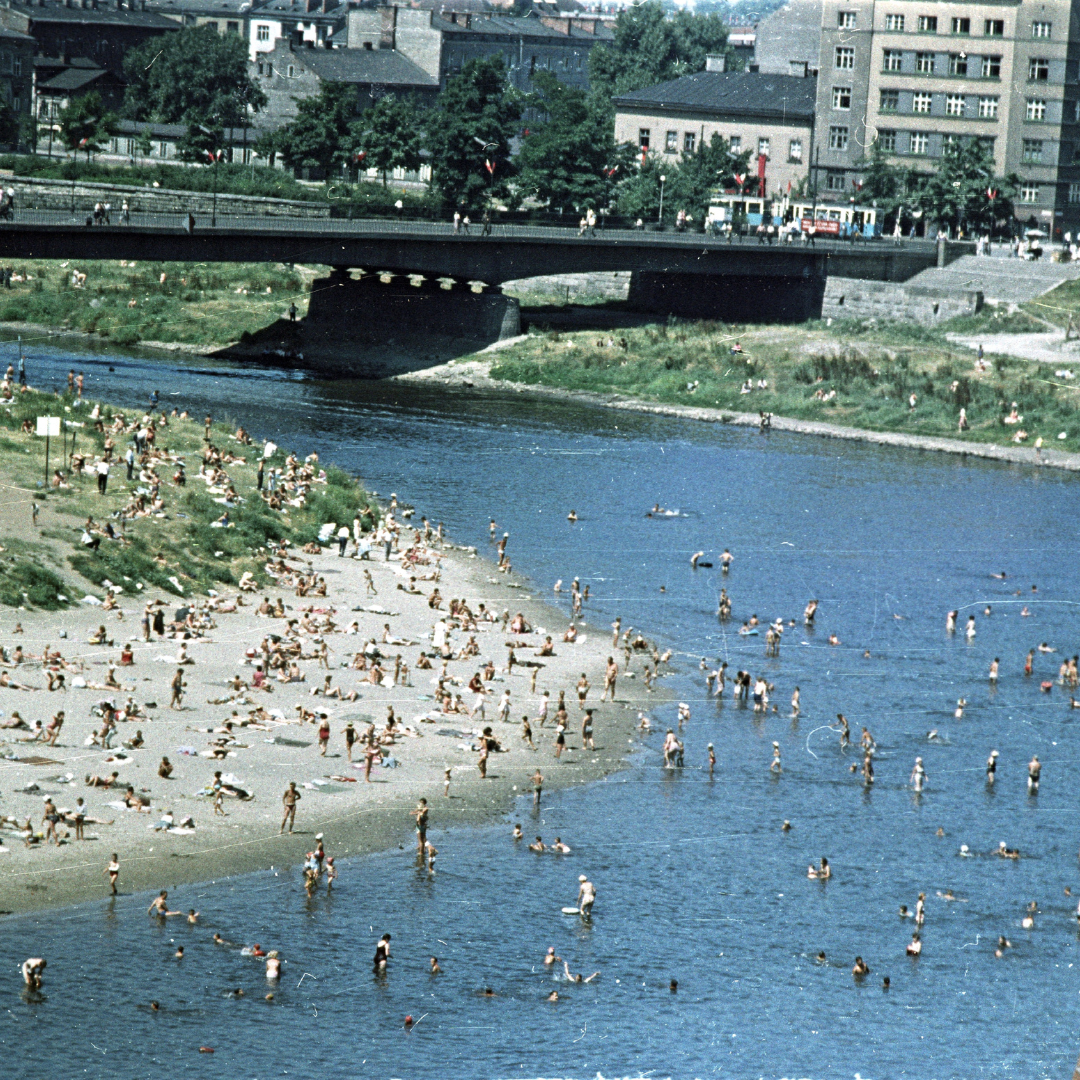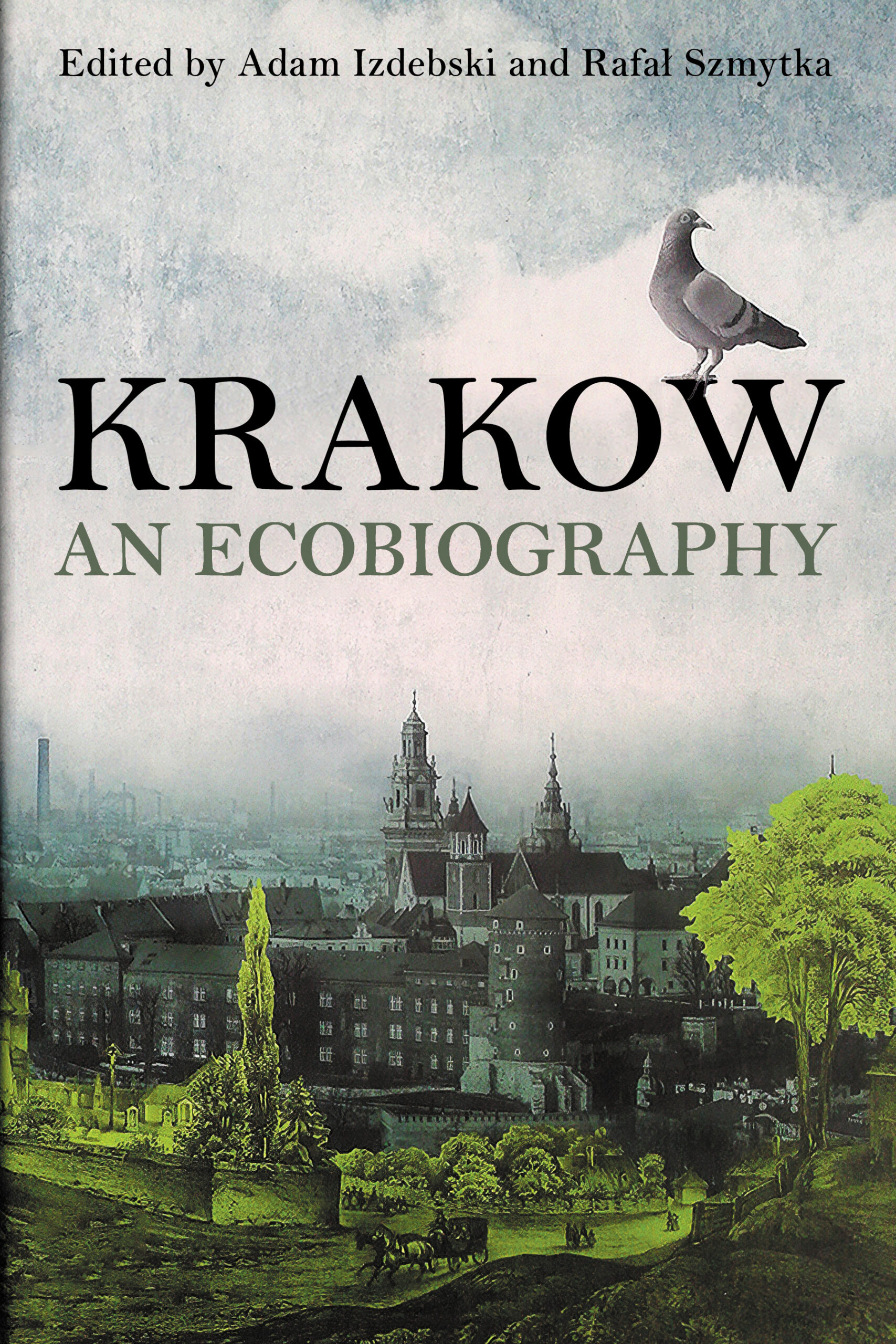An environmental biography of Krakow
 Fortepan / Pál Magyar
Fortepan / Pál Magyar 
Published by: University of Pittsburgh Press
 Fortepan / Pál Magyar
Fortepan / Pál Magyar In this erudite and highly readable volume, historians Adam Izdebski and Rafał Szmytka pull together a range of scholars from across disciplinary boundaries to paint a long durée environmental history of Krakow. Krakow: An Ecobiography reminds us that the ahistorical sciences are indeed historical and that being able to define place emerges as a conversation about what constitutes nature, distinctive locations in a nation’s history, and the environment more broadly. The book deftly explores how geography, soil, air and water work in tandem with expansionist cultural needs as the city grows over a thousand-year period. Its editors chart out an ambitious project, aiming to be the first book on Poland fully dedicated to environmental history. It appears to bypass previous book-length publications, for example, those on the Białowieża Forest, namely the work of Tomasz Samojlik and colleagues, or the growing body of scholarship on the Holocaust and environmental history, such as the towering figure of Ewa Domanska, whose work is not mentioned or referenced. Not only Domanska but also Jacek Malczyński, Erica Lehrer and Roma Sendyka have each been writing about the environmental history of the Holocaust, albeit in article form, in the past few years.
we are led into fascinating and unexpected corners that help readers see how an erratic climate and river system shape and are shaped by human folly
In some ways the book reproduces an older encyclopedic approach to producing knowledge in and about eastern Europe, the kind one might see in popular geography books, where we learn about climate, topography, royal influences, resources and commerce in a descriptive way. The Annales school is cited as a source of inspiration along these lines, which informs the editors’ choices. But in other ways we are led into fascinating and unexpected corners that help readers see how an erratic climate and river system shape and are shaped by human folly or that seed remnants found at recent archaeological digs can tell us a winding tale of the medieval period, or how animal feces were an early source of pollution in the city. While all of the information in this volume is worthwhile in and of itself, it can sometimes seem esoteric and the reader must sift through discipline-specific methodological justifications before being able to see how the parts fit together as a whole. In other words, the book could use more narrative unity between chapters to help the reader interpret disciplinary methods they might be less familiar with.
If not for the volume’s introduction, we might otherwise see the chapters as being far too discipline-specific rather than building upon each other. We might also miss the call to action, where we are motivated to become environmental citizens after digesting Krakow’s history. Surely, experts in various fields, as well as the non-specialist, will find useful materials in each individual chapter. In chapter one on the climate history of Krakow, we learn that the climate in Krakow was never stable and are cautioned against flattening climate history into one narrative of climate change. This chapter is strongly interlinked with chapter two on Krakow and its rivers, which places the natural agency of the river alongside macabre events such as the Vistula consuming human lives and the punishment of a girl who murdered her mother by drowning her along with her cat and dog. The chapters then, however, seem less linked. Other chapters investigate the history of smog in Krakow, asking when and whether Krakovians had an awareness of the sources of smog and how smog is mythologized. There are also chapters on medicinal plants and pollution in early modern Krakow. As for the types of governing regimes that ruled Krakow, from the elite dynasties to the Austro-Hungarian Empire, to the People’s Republic of Poland, the book moves smoothly through these periods, with each chapter turning to a different historical period in chronological order. This approach provides enough context to see cross-over between regimes and yet we are still located in the same city.
An ecological awareness arises when people activate their imaginations within the conjunction of ubiquitous pollution from the Nowa Huta factory and the romantic love of Krakow’s green surroundings.
What brings the potential of the book’s aspirations together is the final chapter by Małgorzata Praczyk, “The Power of Myth: The Imagined Nature of Krakow.” It is here where we begin to understand how the material and the discursive work together as environmental history. An ecological awareness arises when people activate their imaginations within the conjunction of ubiquitous pollution from the Nowa Huta factory and the romantic love of Krakow’s green surroundings. It is in Praczyk’s chapter that we feel we are getting the kind of intellectual purpose that the authors promise in the introduction. The difference lies in having a self-aware analytical framework for analyzing the information presented. Some of the exciting environmental histories that the editors profess to model the book on all have that kind of narrative unity, such as the works of William Cronon or the environmental histories of Seattle, St. Louis and other US cities mentioned in the book. But this is also the difference of an edited volume that wants to be an ecobiography compared to the environmental histories of cities written by one author.
At times the book lends an air of self-importance to its subject matter without really being self-aware about how elite culture reproduces itself. For example, matter of factly, the book states that Krakow is a treasure of Europe, while it is tacitly implied that we all know what Europe means in relation to renaissance and enlightenment values. There is never any question that the royal legacy of Krakow produced only elegance and growth and not inequality.
On the whole the book seems most useful and interesting if one has visited or lived in Krakow or is looking for a way to compare developments across similar locations in Europe. The introduction has been written, however, so as to attract a popular audience and I would argue that the unevenness of the chapters, which is frequently the case with many edited volumes, lends itself rather to specialists who might be inclined to cherry pick amongst the chapters to fit their own specializations.
Eunice Blavascunas is Associate Professor of Anthropology and Environmental Studies at Whitman College, USA. She is the author of Foresters, Borders and Bark Beetles: The Future of Europe’s Last Primeval Forest (Indiana University Press 2020).

Krakow: An Ecobiography
Published by: University of Pittsburgh Press
